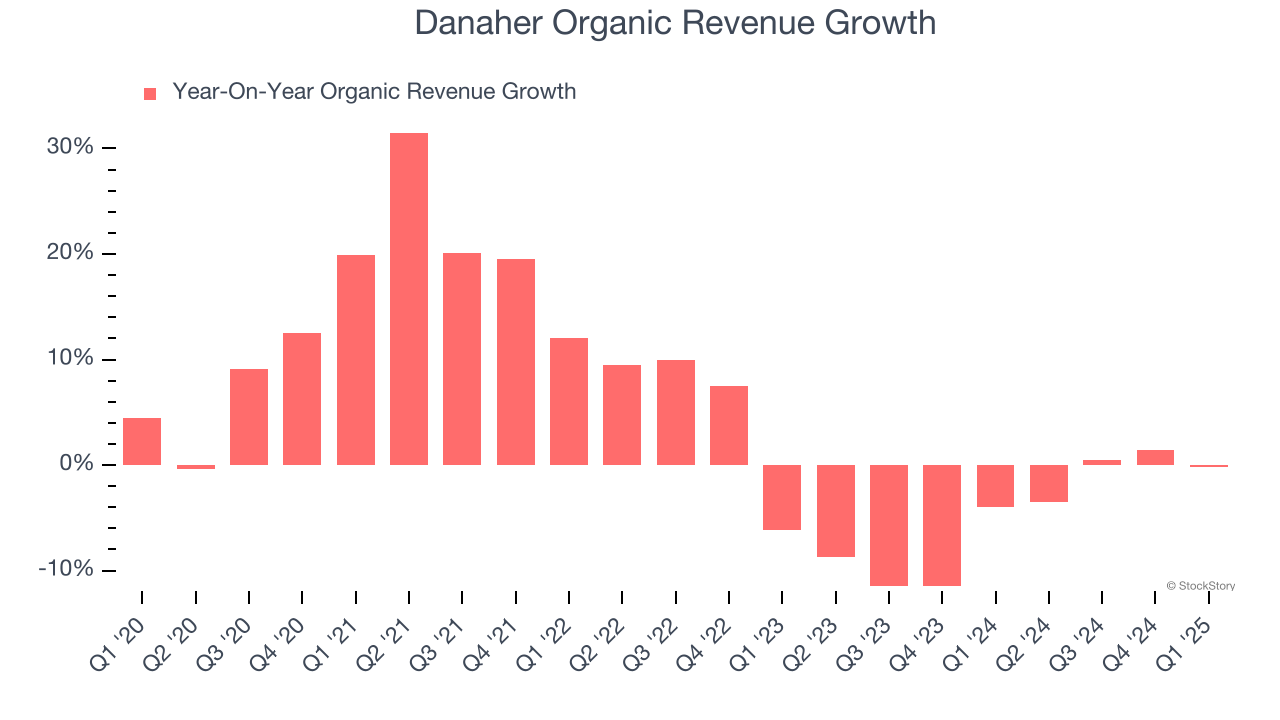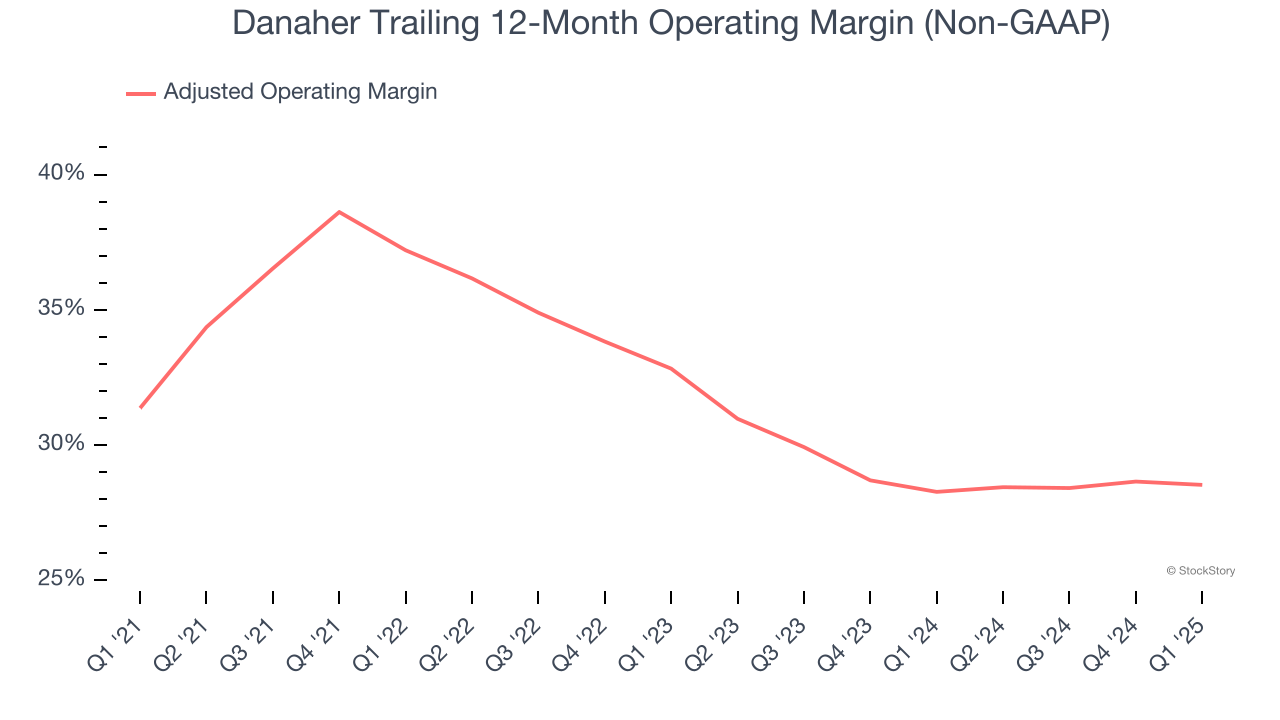
Over the past six months, Danaher’s shares (currently trading at $193.08) have posted a disappointing 15.3% loss while the S&P 500 was down 1.8%. This may have investors wondering how to approach the situation.
Is now the time to buy Danaher, or should you be careful about including it in your portfolio? See what our analysts have to say in our full research report, it’s free.
Why Is Danaher Not Exciting?
Even though the stock has become cheaper, we don't have much confidence in Danaher. Here are three reasons why you should be careful with DHR and a stock we'd rather own.
1. Core Business Falling Behind as Demand Declines
We can better understand Research Tools & Consumables companies by analyzing their organic revenue. This metric gives visibility into Danaher’s core business because it excludes one-time events such as mergers, acquisitions, and divestitures along with foreign currency fluctuations - non-fundamental factors that can manipulate the income statement.
Over the last two years, Danaher’s organic revenue averaged 4.7% year-on-year declines. This performance was underwhelming and implies it may need to improve its products, pricing, or go-to-market strategy. It also suggests Danaher might have to lean into acquisitions to grow, which isn’t ideal because M&A can be expensive and risky (integrations often disrupt focus). 
2. Shrinking Adjusted Operating Margin
Adjusted operating margin is one of the best measures of profitability because it tells us how much money a company takes home after subtracting all core expenses, like marketing and R&D. It also removes various one-time costs to paint a better picture of normalized profits.
Looking at the trend in its profitability, Danaher’s adjusted operating margin decreased by 4.3 percentage points over the last two years. This raises questions about the company’s expense base because its revenue growth should have given it leverage on its fixed costs, resulting in better economies of scale and profitability. Its adjusted operating margin for the trailing 12 months was 28.5%.

3. Free Cash Flow Margin Dropping
Free cash flow isn't a prominently featured metric in company financials and earnings releases, but we think it's telling because it accounts for all operating and capital expenses, making it tough to manipulate. Cash is king.
As you can see below, Danaher’s margin dropped by 6.2 percentage points over the last five years. If its declines continue, it could signal increasing investment needs and capital intensity. Danaher’s free cash flow margin for the trailing 12 months was 20.6%.

Final Judgment
Danaher isn’t a terrible business, but it isn’t one of our picks. After the recent drawdown, the stock trades at 24.4× forward P/E (or $193.08 per share). At this valuation, there’s a lot of good news priced in - we think there are better opportunities elsewhere. We’d suggest looking at an all-weather company that owns household favorite Taco Bell.
Stocks We Like More Than Danaher
Market indices reached historic highs following Donald Trump’s presidential victory in November 2024, but the outlook for 2025 is clouded by new trade policies that could impact business confidence and growth.
While this has caused many investors to adopt a "fearful" wait-and-see approach, we’re leaning into our best ideas that can grow regardless of the political or macroeconomic climate. Take advantage of Mr. Market by checking out our Top 9 Market-Beating Stocks. This is a curated list of our High Quality stocks that have generated a market-beating return of 183% over the last five years (as of March 31st 2025).
Stocks that made our list in 2020 include now familiar names such as Nvidia (+1,545% between March 2020 and March 2025) as well as under-the-radar businesses like the once-micro-cap company Kadant (+351% five-year return). Find your next big winner with StockStory today.
